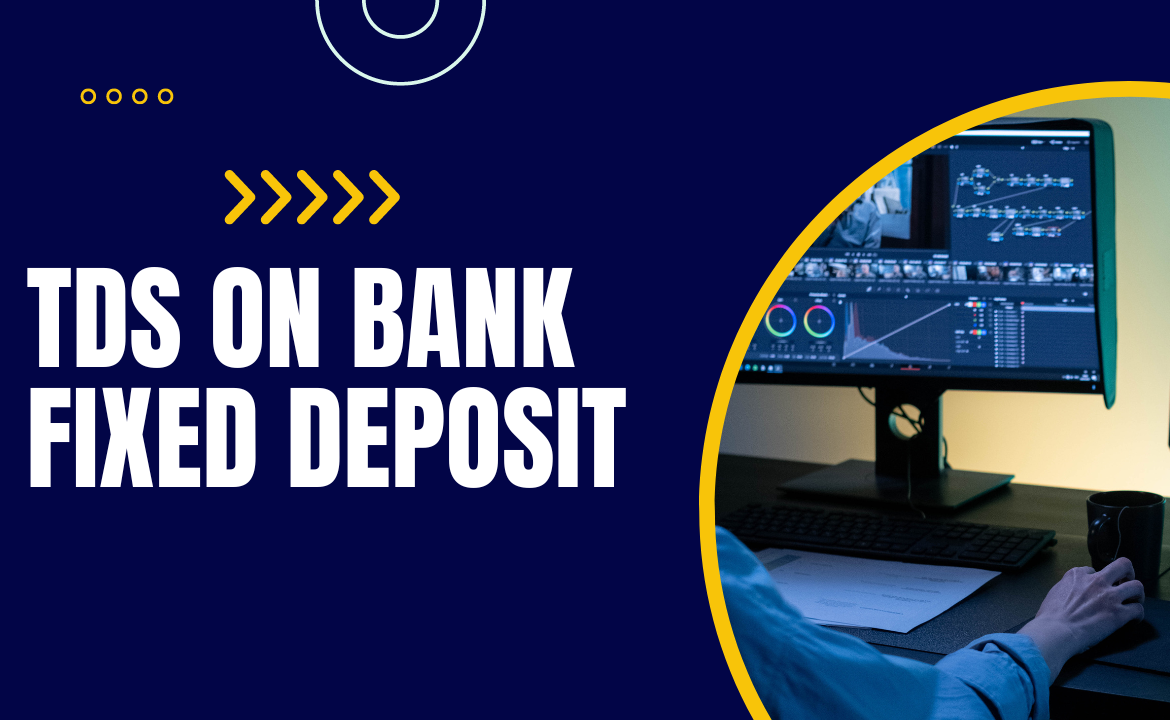TDS, or Tax Deducted at Source, is a mechanism used by the Indian government to collect tax revenue from individuals and entities. In the case of bank fixed deposits, TDS is applicable on the interest earned on the deposit. As per current regulations, banks deduct TDS at a rate of 10% on the interest earned if the interest amount exceeds Rs. 40,000 in a financial year. However, senior citizens can submit Form 15H to avoid TDS if their total income does not exceed the taxable limit. It is important to factor in TDS while calculating the returns on bank fixed deposits.
Introduction to TDS on Bank Fixed Deposit
TDS, or Tax Deducted at Source, is a tax collection mechanism used by the Indian government to ensure a steady stream of revenue. TDS is applicable to various types of income, including interest income earned from bank fixed deposits. The bank, as the payer, deducts a certain percentage of tax from the interest income before paying it to the depositor. The rate at which TDS is deducted and the exemption limits are determined by the Income Tax Act, and are subject to change from time to time. TDS on bank fixed deposits is an important factor to consider while planning your investment and tax strategies.
TDS Rates on Bank Fixed Deposits
TDS rates on bank fixed deposits depend on the interest earned on the deposit in a financial year. As per current regulations, TDS on bank fixed deposits is applicable when the interest income exceeds Rs. 40,000 in a financial year. The TDS rate is 10% of the interest earned. However, if the depositor does not provide their Permanent Account Number (PAN) to the bank, the TDS rate is 20%. It is important to note that TDS is deducted on the interest income, and not on the principal amount invested. The TDS deducted can be claimed as a tax credit while filing the income tax return. Senior citizens can submit Form 15H to avoid TDS if their total income does not exceed the taxable limit.
How to Calculate TDS on Bank Fixed Deposits
Calculating TDS on bank fixed deposits is a straightforward process. The TDS is calculated on the interest earned on the fixed deposit for a financial year.
Here’s an example:
Suppose you have a fixed deposit of Rs. 5 lakh with an annual interest rate of 6%. The interest earned in a financial year would be Rs. 30,000 (6% of Rs. 5 lakh). If this is your only source of income, and your total income does not exceed the taxable limit, you can submit Form 15H to avoid TDS. Otherwise, TDS will be applicable on the interest earned.
For the purpose of this example, let’s assume TDS is applicable. As per current regulations, TDS is deducted at a rate of 10% on the interest earned, which would be Rs. 3,000 (10% of Rs. 30,000). The bank would deduct Rs. 3,000 as TDS and credit the remaining amount of Rs. 27,000 to your account.
It is important to note that TDS is deducted on the interest income, and not on the principal amount invested.
How to Avoid TDS on Bank Fixed Deposits
There are a few ways to avoid TDS on bank fixed deposits:
- Submit Form 15G or Form 15H: If your total income for the financial year is below the taxable limit, you can submit Form 15G (for individuals below 60 years of age) or Form 15H (for senior citizens) to the bank. These forms are a self-declaration stating that your income is below the taxable limit. Once the form is submitted, the bank will not deduct TDS on the interest earned.
- Invest in Tax-Saving Fixed Deposits: Tax-saving fixed deposits (FDs) have a lock-in period of 5 years and offer tax benefits under Section 80C of the Income Tax Act. The interest earned on tax-saving FDs is also taxable, but there is no TDS if the interest earned is up to Rs. 40,000 in a financial year.
- Split Your Investment: If you have a large amount to invest in fixed deposits, you can split your investment across multiple banks. TDS is applicable if the interest earned on fixed deposits from a single bank exceeds Rs. 40,000 in a financial year. By investing in multiple banks, you can avoid TDS on your interest income.
It is important to note that while these methods can help you avoid TDS, you still need to include the interest earned on fixed deposits in your income tax return and pay tax on it, if applicable.
TDS Certificate for Bank Fixed Deposits
TDS certificate for bank fixed deposits is issued by the bank to the depositor. The certificate is a proof of tax deducted at source on the interest income earned from the fixed deposit. The certificate contains details such as the name and address of the depositor, PAN number, details of the fixed deposit, TDS amount deducted, and the TDS rate.
Banks are required to issue TDS certificates to depositors on a quarterly basis. The due dates for issuing TDS certificates are as follows:
- For the April to June quarter: 15th July
- For the July to September quarter: 15th October
- For the October to December quarter: 15th January
- For the January to March quarter: 15th May
The TDS certificate is an important document as it serves as proof of tax deducted at source on the interest income earned from the fixed deposit. The depositor needs to keep the TDS certificate safely for filing their income tax returns and for any other tax-related purposes. If a TDS certificate is lost or not received from the bank, the depositor can request a duplicate certificate from the bank.
Conclusion on TDS on Bank Fixed Deposits
In conclusion, TDS on bank fixed deposits is a tax deducted at source on the interest income earned from fixed deposits. The current TDS rate for fixed deposits is 10% on the interest earned, and it is applicable if the interest earned in a financial year exceeds Rs. 40,000 for individuals and Rs. 50,000 for senior citizens.
However, individuals and senior citizens can avoid TDS on their interest income by submitting Form 15G or Form 15H, respectively, if their total income does not exceed the taxable limit. Alternatively, investing in tax-saving fixed deposits or splitting the investment across multiple banks can also help avoid TDS.
It is important to note that TDS is deducted on the interest earned, and not on the principal amount invested. Depositors need to keep track of the TDS deducted and the TDS certificates issued by the bank to file their income tax returns and for other tax-related purposes.
Also Read:
- Filing a nonprofit tax return: The Basics
- A Complete Guide About Capital Gains Tax
- The Basics of Self-Employment Taxes
- What to Understand about IRS Tax Liens and How to Have them Removed

Hello, I am Tanisha Kriplani, graduated in computer science from Delhi University. I am passionate about web content writing and have a strong interest in Data Analytics and Data Engineering.












